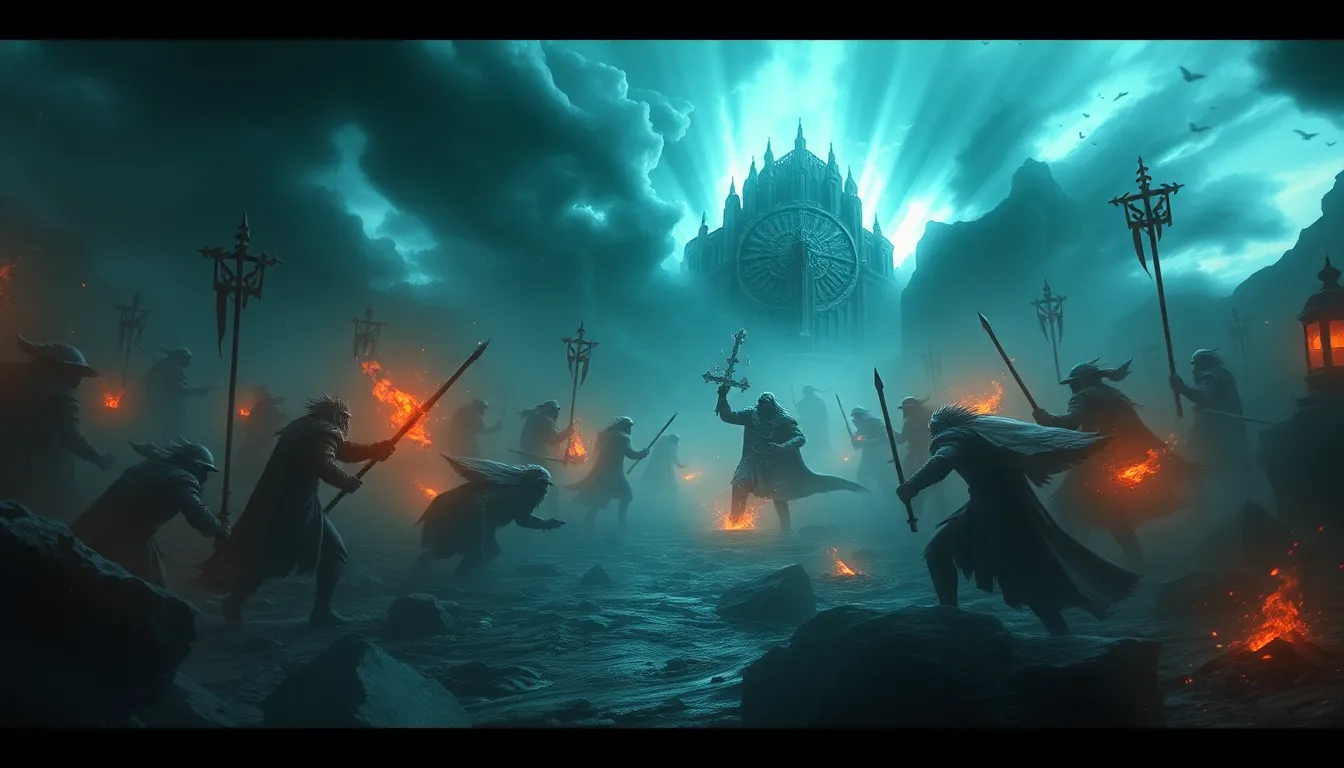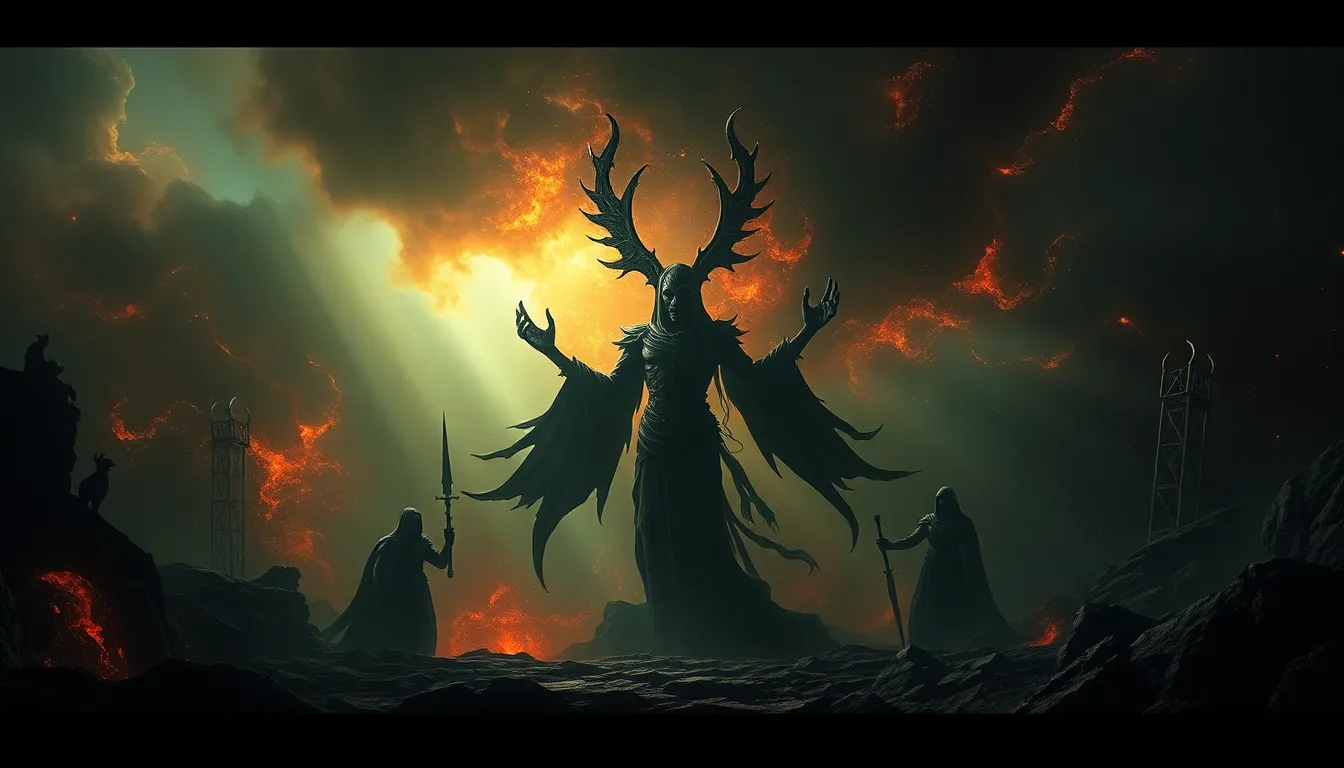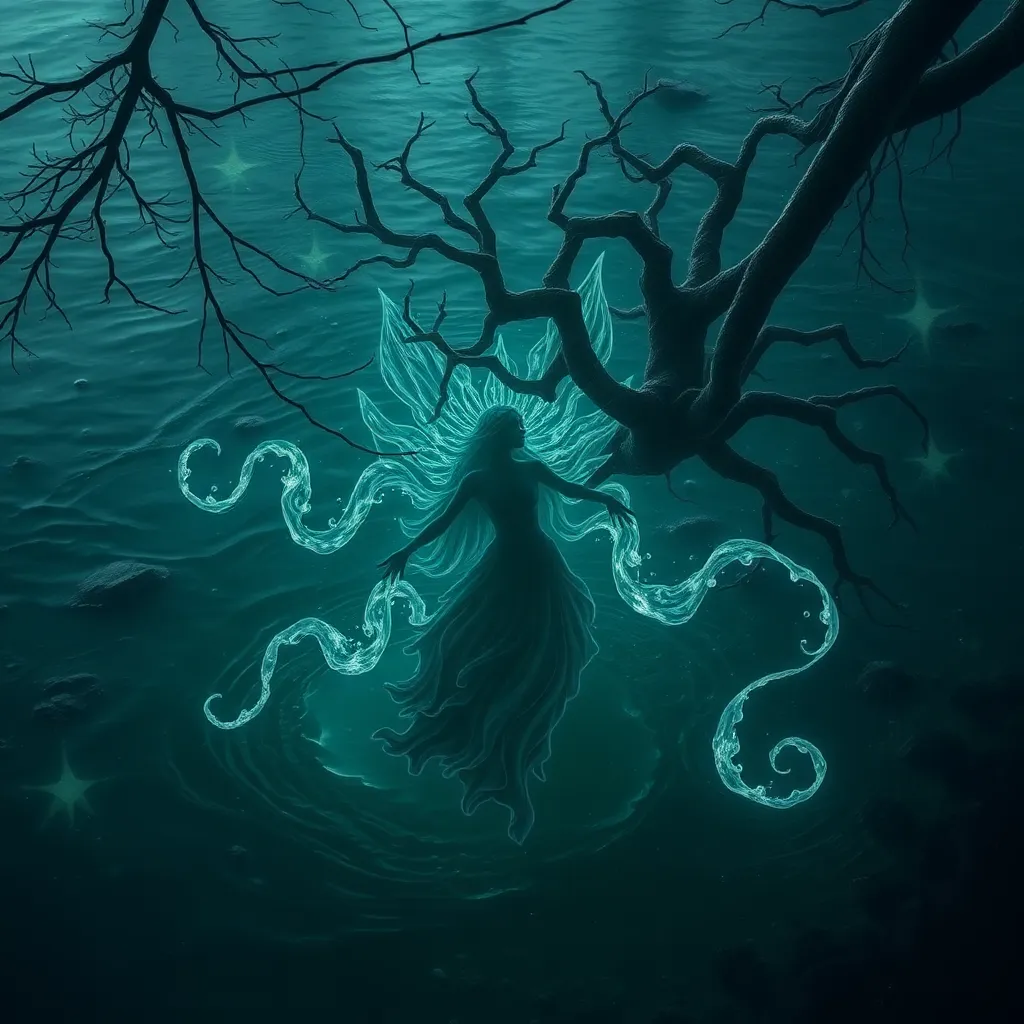From Olympus to Valhalla: Legendary Battles of the Gods
I. Introduction
Mythological battles refer to the epic conflicts between divine beings, often symbolizing the struggle between good and evil, order and chaos, or the forces of nature. These battles are not mere tales of combat; they reflect the values, fears, and aspirations of the cultures that created them. In both Greek and Norse mythology, battles play a pivotal role in shaping the narratives and destinies of gods and mortals alike.
The importance of these battles in mythology cannot be overstated. They serve as the backdrop for cosmic struggles that define the very fabric of existence. In Greek mythology, we find Olympian gods pitted against Titans and Giants, while Norse mythology presents us with the Aesir and Vanir deities clashing in their own fierce conflicts. This article explores these legendary battles, highlighting their significance and the cultural legacy they have forged.
II. The Pantheons: Olympus vs. Asgard
A. Introduction to the Greek Gods of Olympus
The Greek pantheon is centered around Mount Olympus, home to the Olympian gods, led by Zeus, the king of the gods. These deities are known for their human-like qualities, including emotions, flaws, and desires. Key figures include:
- Zeus – King of the gods, god of the sky.
- Hera – Queen of the gods, goddess of marriage.
- Athena – Goddess of wisdom and warfare.
- Poseidon – God of the sea.
- Ares – God of war.
B. Introduction to the Norse Gods of Asgard
In contrast, the Norse gods reside in Asgard, where they engage in a constant struggle against various threats, including giants and other creatures. The Aesir, led by Odin, and the Vanir, associated with fertility and prosperity, represent different aspects of existence. Important figures include:
- Odin – Allfather and god of wisdom, death, and magic.
- Thor – God of thunder, protector of humanity.
- Freya – Goddess of love, war, and fertility.
- Loki – Trickster god, often causing trouble for the Aesir.
C. Key Differences and Similarities Between the Two Pantheons
While both pantheons share themes of conflict and divine intervention, they differ in their portrayals of gods and the nature of their battles. Greek gods often embody human traits, whereas Norse gods are more stoic and fated to face inevitable doom in Ragnarok. Both mythologies, however, highlight the consequences of divine actions on the mortal realm.
III. The Titanomachy: The War Against the Titans
A. Background of the Titans and Olympian Gods
The Titanomachy was a ten-year war between the Olympian gods, led by Zeus, and the Titans, their predecessors. The Titans, offspring of Uranus (Sky) and Gaia (Earth), represented primal forces of nature. Key Titans included Cronus, Rhea, and Oceanus.
B. Major Events of the Titanomachy
The conflict began when Zeus and his siblings freed their siblings, the Cyclopes and Hecatoncheires, from the clutches of Cronus. Armed with powerful weapons forged by the Cyclopes, Zeus led the charge against the Titans. Major events included battles on Mount Olympus and the eventual defeat of Cronus.
C. Consequences and Legacy of the War
The Titanomachy resulted in the establishment of the Olympian gods’ reign over the cosmos. The Titans were imprisoned in Tartarus, symbolizing the triumph of order over chaos. This war set the stage for subsequent conflicts in Greek mythology and showcased the theme of generational struggle.
IV. The Aesir-Vanir War: A Clash of Norse Deities
A. Overview of the Aesir and Vanir Gods
The Aesir and Vanir are two distinct tribes of Norse deities. The Aesir, including Odin and Thor, are associated with war and governance, while the Vanir, such as Njord and Freyr, embody fertility and prosperity.
B. Causes and Key Events of the Aesir-Vanir War
The war arose from a dispute over the balance of power and resources. Both sides engaged in fierce battles, employing magic and cunning strategies. Notable events included the siege of Asgard and the use of hostages as a means to broker peace.
C. Resolution and Impact on Norse Mythology
The conflict ended in a truce, leading to a mutual exchange of deities. This resolution underscored the importance of cooperation among gods and set the stage for later mythological tales, emphasizing themes of balance and integration.
V. The Trojan War: Divine Interference and Human Struggles
A. Overview of the Trojan War’s Background
The Trojan War, a legendary conflict between the city of Troy and the Greek states, was ignited by the abduction of Helen, wife of Menelaus. This war lasted a decade and involved a wide array of heroes and gods.
B. The Role of Greek Gods in the Conflict
The gods played a significant role in the Trojan War, often intervening to aid their favored mortals. Key divine figures included:
- Aphrodite – Supported the Trojans.
- Hera – Advocated for the Greeks.
- Athena – Played a crucial role in strategizing for the Greek side.
C. Consequences for Both Mortals and Gods
The war led to the fall of Troy and the deaths of many heroes. For the gods, it represented the complexities of divine favor and the consequences of their meddling in human affairs, ultimately showcasing the fragility of honor and glory.
VI. Ragnarok: The End of Days in Norse Mythology
A. Prophecies Surrounding Ragnarok
Ragnarok is the prophesied end of the world in Norse mythology, characterized by a series of catastrophic events including battles, natural disasters, and the death of numerous gods, including Odin and Thor.
B. Key Battles and Their Significance
The conflict at Ragnarok involves several iconic battles, including:
- The final confrontation between the Aesir and the giants.
- The clash between Thor and the serpent Jörmungandr.
These battles symbolize the ultimate struggle between chaos and order, reflecting the inevitability of fate.
C. Aftermath and Rebirth in Norse Cosmology
Post-Ragnarok, the world is said to be reborn, with surviving gods and a new generation of heroes. This cycle of destruction and renewal emphasizes the Norse belief in the impermanence of existence and the hope for regeneration.
VII. The Gigantomachy: Giants vs. Olympians
A. Introduction to the Giants in Greek Mythology
The Gigantomachy is a mythical battle between the Olympian gods and the Giants, offspring of Gaia. The Giants are often depicted as colossal beings representing chaos and nature’s fury.
B. Major Events and Battles of the Gigantomachy
This epic battle was marked by fierce confrontations. Key events included:
- The Giants’ attempt to overthrow the Olympians.
- The involvement of Hercules, who played a crucial role in defeating the Giants.
C. Themes of Order vs. Chaos
The Gigantomachy symbolizes the struggle between the established order of the Olympian gods and the chaotic forces represented by the Giants. This theme resonates throughout Greek mythology, reinforcing the values of civilization and harmony.
VIII. The Battle of the Gods: The Role of Fate and Free Will
A. Exploration of Fate in Greek and Norse Mythologies
Fate plays a crucial role in both mythologies. In Greek thought, the Fates control the destinies of gods and mortals alike, while in Norse mythology, the concept of wyrd governs the fates of all beings.
B. The Influence of Prophecy on Divine Actions
Prophecies often guide the actions of gods in both mythologies, leading to attempts to alter predestined outcomes. This tension between fate and free will creates a rich narrative landscape.
C. Free Will Versus Destiny in the Choices of Gods
The gods’ struggles against their fates illustrate



